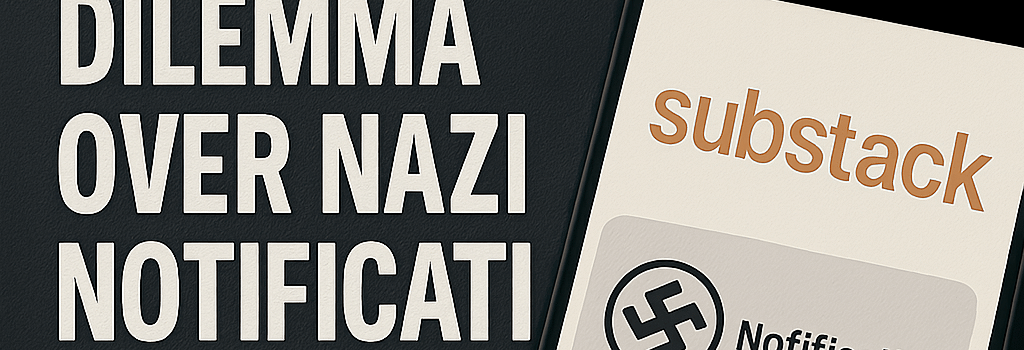Substack Faces Extremism Dilemma Over Nazi Notification Error

Incident Overview: From Outreach to Outrage
In late July 2025, Substack inadvertently dispatched a push notification featuring a swastika icon and a link to a neo-Nazi newsletter. Within minutes, affected users reported the offensive alert on both iOS (via Apple Push Notification service) and Android (via Firebase Cloud Messaging). Substack’s CTO confirmed the issue was triggered by a misrouted API call in a batch job that assembled “trending newsletter” digests.
“We discovered an error that caused some people to receive push notifications they should never have received,” Substack stated. “In some cases, these notifications were extremely offensive or disturbing. This was a serious error, and we apologize for the distress it caused.”
Technical Root Cause Analysis
Preliminary diagnostics point to a flawed SQL query in Substack’s analytics pipeline. A malformed LEFT JOIN on the newsletter_tags and performance_metrics tables inadvertently pulled extremist tags into the “rising” algorithm. When serialized into the push queue, these obsolete tags were not filtered out by the content safety layer.
- Batch size: 10,000 notifications per job
- Queue system: Apache Kafka with retention of 7 days
- Notification SDKs: Substack’s custom wrapper over APNs and FCM
Substack has since taken the notification service offline, issued a hotfix to sanitize tag joins, and added a dedicated regex filter to strip known extremist iconography from push payloads.
Content Moderation and Recommendation Algorithms
Substack’s “no censorship” policy rests on the belief that demonetizing or banning extremist authors drives them underground. However, industry experts question the efficacy of this approach in a distributed content ecosystem. The platform’s “rising” and “featured” lists rely on a hybrid ranking model:
- Engagement score (open rate & click-through rate)
- Recency decay (half-life of 48 hours)
- Reputation metric (author tenure & subscriber feedback)
Without explicit blacklist enforcement, newsletters promoting hate can still accumulate high engagement scores—especially within niche circles—thus qualifying for algorithmic promotion.
Expert Analysis and Remediation Pathways
Joshua Fisher-Birch, terrorism analyst at the Counter Extremism Project, warns that extremist groups view Substack as a reliable backup to Telegram or Discord. “Substack’s brand equity provides a veneer of legitimacy,” he explains. “When users see a well-designed interface with familiar UX patterns, they assume the platform enforces stricter content policies.”
Key recommendations from CEP:
- Implement a real-time ML classifier to detect hate symbols via image hashing and OCR.
- Enforce explicit hate speech policies banning white supremacist and neo-Nazi content.
- Publish transparency reports detailing takedown metrics, false positives, and appeals.
Platform Architecture and Extremist Propagation
Substack’s microservices architecture—built on Kubernetes and Google Cloud Platform—allows rapid feature deployment but can complicate cross-service content governance. Each microservice (frontend, newsletter generation, recommendation engine, push service) maintains its own datastore and access controls. Without a centralized policy enforcement point, extremist content can slip through the cracks.
Proposed technical safeguards include:
- Service Mesh with Istio to enforce a global policy layer.
- gRPC interceptors for on-the-fly metadata inspection.
- Automated fuzz testing of all batch pipelines to uncover edge-case routing errors.
Regulatory and Legal Implications
The U.S. Department of Homeland Security has identified online hate speech as a catalyst for real-world violence. Substack’s recent lapse may attract scrutiny under Section 230 reform discussions on Capitol Hill. Legal experts note that platforms that knowingly facilitate extremist content could face new fiduciary obligations or safe-harbor exemptions.
“If Congress updates intermediary liability to require demonstrable moderation efforts, platforms like Substack will need to invest heavily in compliance tooling,” says tech policy attorney Dr. Monique Reyes.
Looking Ahead: Balancing Free Expression and Safety
Substack’s leadership faces a critical inflection point: maintain a laissez-faire content stance or adopt a proactive moderation posture leveraging AI/ML, human review, and community reporting. As rival platforms—Ghost, Buttondown, Beehiiv—pitch lower fees and open-source alternatives, Substack must rebuild trust or risk a user exodus.
Categories: Tech News, Cybersecurity, Web Development